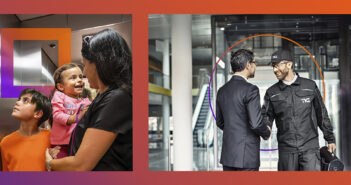Consumer data paints a gloomy picture for the retail sector, not just in Britain, but across the developed world. Stores are quick to blame e-commerce for the death of bricks-and-mortar stores.
The latest consumer data from the Office for National Statistics makes concerning reading for commercial landlords. Sales fell 0,5% in May, with department stores, often key tenants, suffering a dramatic 4,5% drop in sales. Empty House of Fraser stores across the country serve as a stark reminder that the way people shop is changing — and other department stores are taking note. Debenhams is forfeiting spaces across the country, while others are begging landlords to slash rents.
So why is retail struggling? Some say it’s unseasonably cold weather; others say it’s Brexit and the faltering economy. But this trend can be traced back beyond a few rainy weekends and far beyond Britain’s current political miasma. Sales are slipping across Europe and declining sharply in otherwise strong economies like Australia, leading many to point the finger at the high street’s most familiar adversary: online shopping.
Retail therapy amid trade tensions
Predictions that online shopping will destroy bricks and mortar shopping date back to the 90s with the birth of Amazon and eBay. The last three decades have seen the high street weather the global financial crisis, the advent of social media and ever-more elaborate digital sales funnels, and yet it continues to trundle forward and adapt to the times. To understand where it’s heading next, we need to think bigger.
In the US and China, retail is thriving. Escalating trade tensions have dampened retail projections in each market for more than a year now. The conventional wisdom is that uncertainty is bad for business, but the sales data paints a very different picture. In May, US retail sales rose 3,6% on the previous year following a stronger than expected April. In China, industrial output is plunging to new depths, but retail grew 50 basis points higher than expectations.
What these retail markets have in common is that they are pioneering new ways to merge online and offline shopping. Earlier this year, Amazon surpassed Walmart as the world’s largest retailer, and they’ve been accelerating plans to expand their physical presence on high streets with their cashier-free convenience stores. And these are far from the only new face on the high street.
Digital natives in the wild
Online purchases still only account for around 12% of retail sales, making the move into bricks and mortar stores appealing for many e-commerce startups. Major new brands such as Allbirds, Everlane, Naadam, and Casper are pursuing ambitious plans to roll out across the US and Europe. Yet these shops aren’t going to look or feel like the stores that currently fill large malls.
Unlike traditional bricks and mortar stores, these new concepts are prioritising experience over transactions. They know that customers will come to the store to check out new products, but are just as likely to buy online as on the spot.
This means they can reduce their footprint by carrying less stock, while dedicating more space to events and community building experiences such as talks, parties or other gatherings.
Integrating online and offline data is also a key part of their strategies. Everlane, for instance, has developed in-store technology that connects a person to their online profile, so they can use the credit card they have on file to make a purchase. In China, platforms like Alibaba and WePay are taking this further by requiring customers to log into stores with their smartphones before entering.
Smartphone-directed shopping
Once consumers are using their phones to log into physical spaces, it fundamentally changes what can be understood about purchasing decisions. In the past, a shopper looking at their phone meant that a physical store is about to be undercut on price. Now, retailers are discovering the value of the data that can be obtained when shoppers integrate their online and offline shopping.
Perhaps the most visible sign of this is the gradual experimentation with augmented reality (AR) that is creeping into bricks and mortar shopping. Last year, L’Oreal acquired AR startup Modiface as part of a project to allow shoppers to try endless variations of make-up in front of a smart mirror in stores. In the homeware business, the same technology is being utilised to feed back into online sales. Both Ikea and Macey’s have released apps that use AR to allow customers to place virtual furniture in their own homes.
At Pi Labs, we have recently invested in Decology, which lets you decorate your own home and buy home furnishings from multiple retailers using a smart AR-enabled interior design app. This is part of our broader strategy to invest in new concepts in the retail property sector.
As the lines between offline and online shopping continue to blur, we can expect the retail real estate market to change significantly. Smaller stores with less inventory will become more common, while experiences and events are increasingly enticing shoppers. Online-only stores will venture into the high street with a renewed emphasis on creating destinations worth visiting.
Flagship House of Fraser stores may now lay quiet, but it won’t be long until new concepts take their place. And when they do, remember to bring your phone — otherwise you might not be able to log in.



